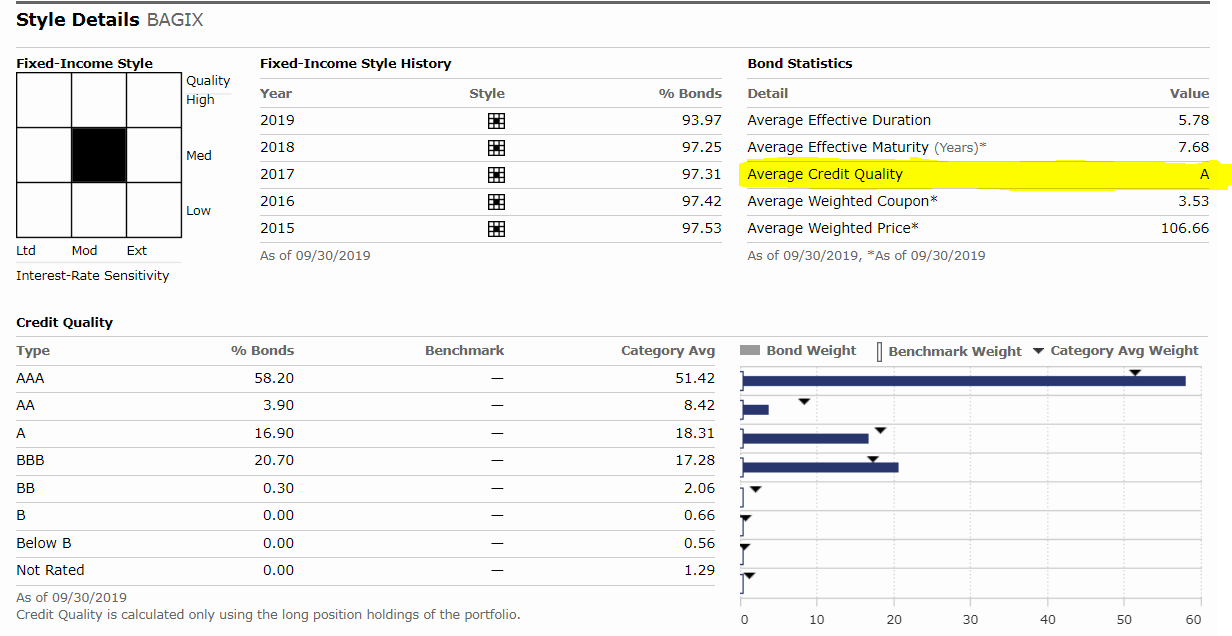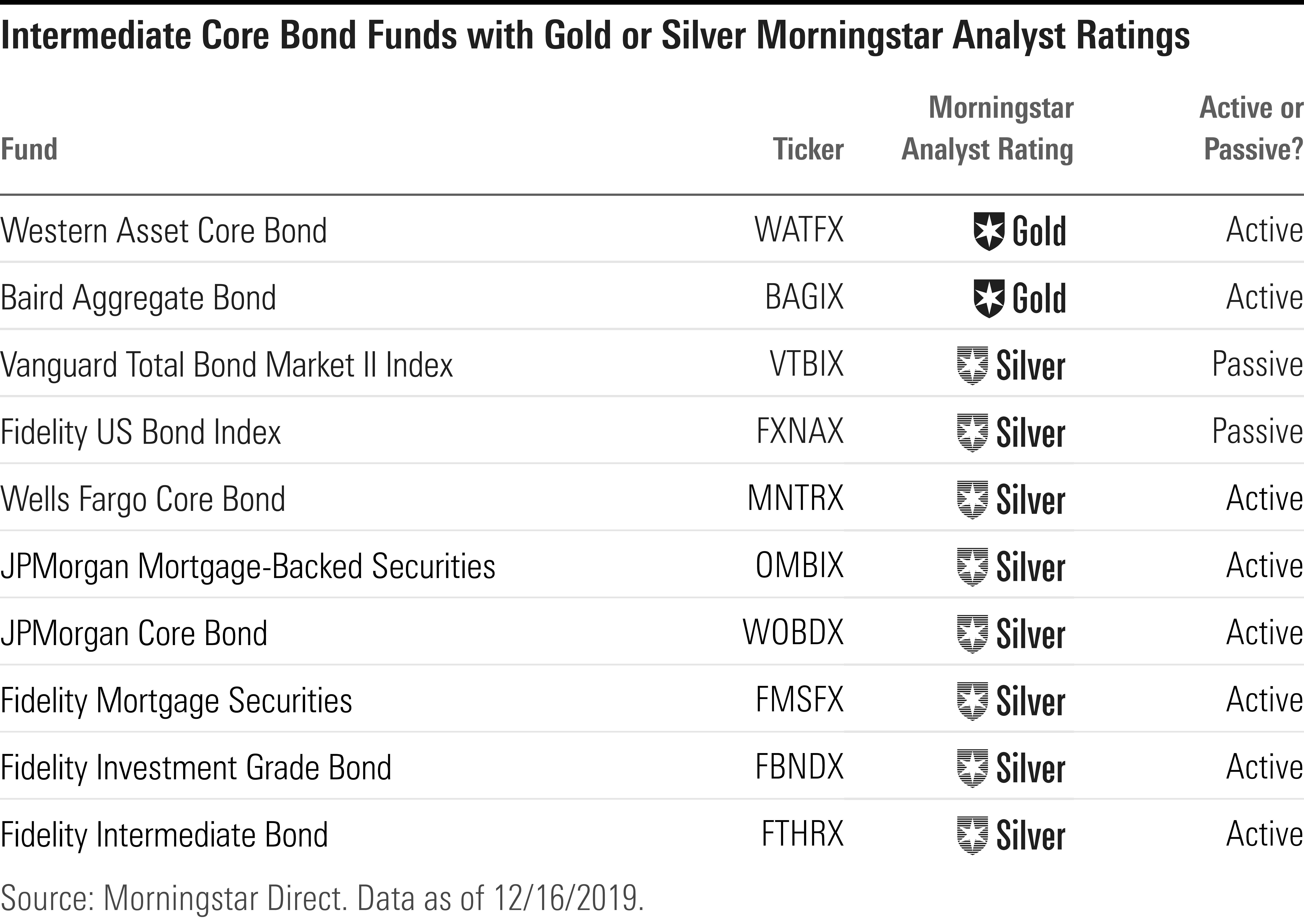How to Pick a First Bond Fund
We tell first-time bond investors what they need to know about intermediate core bond funds.
Bonds play an important role in a portfolio. Many types of bonds hold up well when stocks decline, so they can help smooth out sharp stock market swings. Funds from the intermediate core bond Morningstar Category are suitable for investors of all ages. We'll take a closer look at the category and show you how to use Morningstar research to choose a fund.
The Case for Intermediate Core Bond Funds The intermediate core bond category invests mainly in high-quality bonds from three U.S. sectors: government, corporate, and securitized debt. The bonds are considered high-quality because they come from financially sound issuers that are likely to repay their debts. As Morningstar's director of personal finance Christine Benz highlights, high-quality bonds provide some of the best protection against stock market declines. In other words, high-quality bond funds are good diversifiers.
Note that the intermediate-term category differs from the newly created intermediate core-plus bond category, which can invest in riskier debt areas like emerging markets and below-investment-grade bonds. These funds also contain suitable core bond fund choices, but heightened credit risk means they might move more in rhythm with the stock market, reducing their diversification potential.
What Are the Risks? There are two primary risks with bonds: interest-rate risk and credit risk.
Interest-Rate Risk Changes in interest rates impact bond prices. When interest rates rise, a bond's price falls, and when interest rates fall, a bond's price rises. A figure called duration measures how sensitive a bond's price is to changes in interest rates. Duration incorporates these three main elements:
- Maturity: The time between a bond's purchase and repayment.
- Par value: A bond's value, which is often repaid at the end of a loan
- Coupon payments: Regular cash payments based on a fixed percentage (interest rate) of par value.
In very general terms, a bond's price will change 1% in the opposite direction of the interest-rate change for each year of duration. For example, the price of a bond with a five-year duration will be expected to lose 5% for each 1% rise in interest rates (and vice versa).
Generally, intermediate core bond funds have moderate durations (the category average is 5.4 years). This makes it a good hunting ground for bond investors who want to avoid large swings in their fund's performance.
A portfolio's average effective duration measures how much a fund's price (or net asset value) is expected to change if interest rates shift by 1 percentage point. You can find a fund's average effective duration on the portfolio tab of its Morningstar quote page.

Source: Morningstar.
Credit Risk Credit risk measures how likely it is that a lender will repay you. If you lend to an institution that's strapped for cash, it could default, or not repay you. Credit-rating agencies examine a lender's ability to repay its debts, and they issue credit ratings based on the risk of default. These ratings help you understand the credit risk embedded in a bond.
Intermediate core bond funds invest mostly in investment-grade bonds, which carry modest credit risk. This means investors are likely to be repaid in full, with interest. You can find a fund's average credit quality on the portfolio tab of its Morningstar quote page. The highest credit-quality debt is AAA followed by AA, A, BBB, BB, B, and below B. An average credit quality at or above BBB is considered to be investment-grade.

Source: Morningstar.
Should I Choose an Active or Passive Fund? In short, it depends.
Passive funds can be a good choice because passive investments often have low costs. Costs directly reduce an investor's return, and they're particularly important in the intermediate core bond space because the group's range of performance is tight. A small fee difference can make a large impact.
Other investors might seek active management. Our research suggests the intermediate core bond category is a pretty decent space for active management. A recent Morningstar report showed that 44.4% of the category's cheapest-quintile active funds beat their passive peers over a 10-year period. Another report indicated that this category's active funds have maintained their potential to outperform for over 15 years.
Another consideration is that active and passive funds generally have different sector and risk tilts. As Morningstar's director of fixed-income strategies Karin Anderson wrote, intermediate core bond indexes tilt toward government debt like U.S. Treasuries because they represent much of the investment universe. Government debt is sensitive to interest-rate changes, meaning passive intermediate core bond funds are more exposed to performance volatility from interest-rate shifts.
Contrarily, as Morningstar's director of passive strategies Alex Bryan wrote, the category's active managers often take on more credit risk by investing in corporate and securitized debt. Many active intermediate core bond funds that Morningstar rates highly take on more credit risk, but they manage it well by diversifying among sectors and placing guardrails around individual holding sizes and sector weights. Baird Aggregate Bond BAGIX, which has a Morningstar Analyst Rating of Gold, is a good example of this.
You can better understand if a fund's risk has rewarded investors via risk-adjusted returns. This figure scales every investment's return to the risk that it took, helping you make apples-to-apples comparisons against peers and benchmark indexes with different risk profiles.
Our 10 Highest-Conviction Intermediate Core Bond Funds Morningstar assigns Analyst Ratings of Gold, Silver, and Bronze to funds that we believe are likely to beat their benchmark indexes (and, in the case of actively managed funds, the peer group average) after fees.
Below is a list of 10 intermediate core bond funds with Gold and Silver ratings that are open to new investors.


/s3.amazonaws.com/arc-authors/morningstar/b70d0063-c0bd-47f4-a1f5-74ff9b0435b1.jpg)
/cloudfront-us-east-1.images.arcpublishing.com/morningstar/6ZMXY4RCRNEADPDWYQVTTWALWM.jpg)
/d10o6nnig0wrdw.cloudfront.net/06-11-2024/t_a4a9c8e4b4944a9fab91f0fccfde5dcc_name_MIC_24_Jerome_Schneider_Speaker_1920x1080.png)
/cloudfront-us-east-1.images.arcpublishing.com/morningstar/AGAGH4NDF5FCRKXQANXPYS6TBQ.png)
:quality(80)/s3.amazonaws.com/arc-authors/morningstar/b70d0063-c0bd-47f4-a1f5-74ff9b0435b1.jpg)